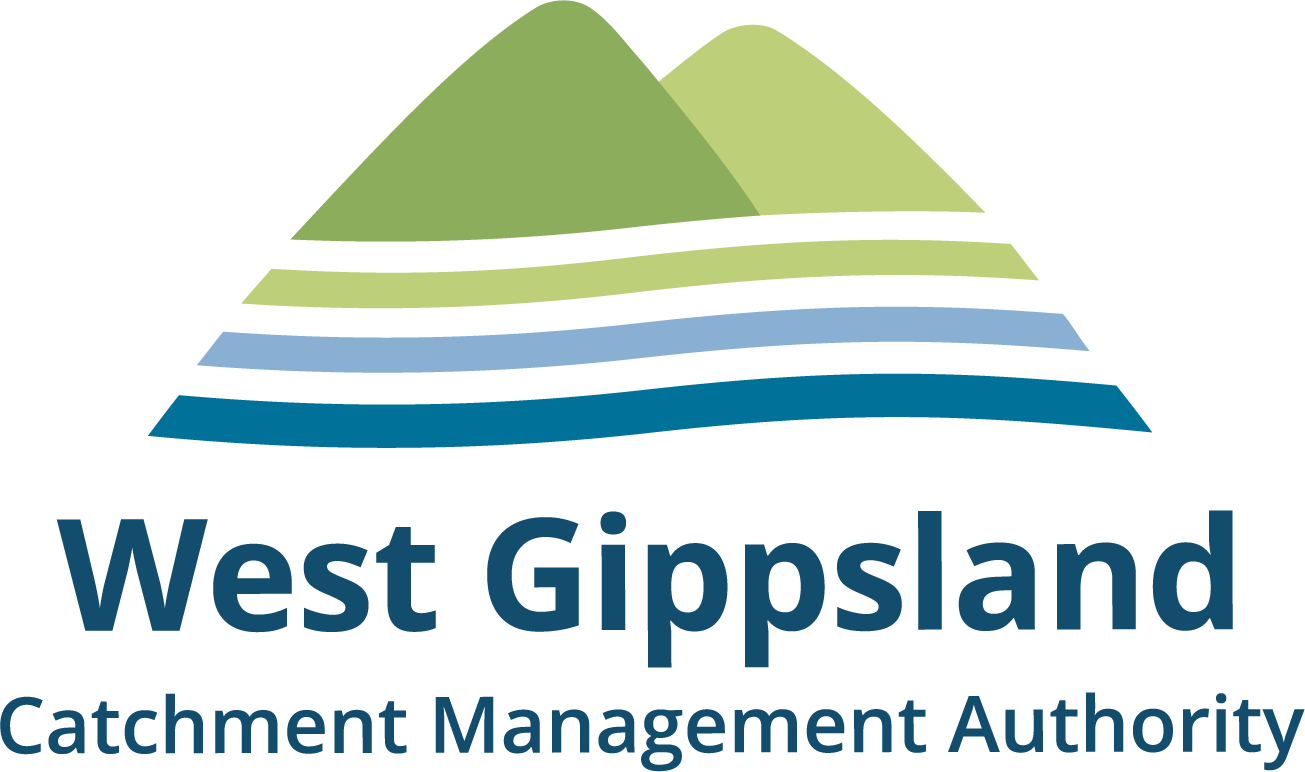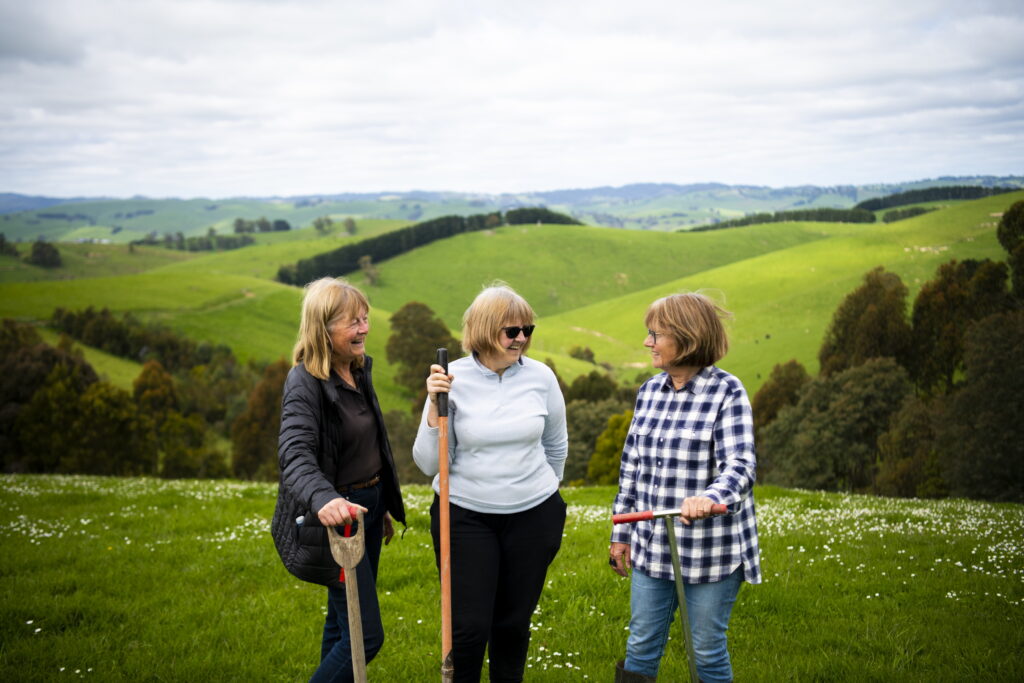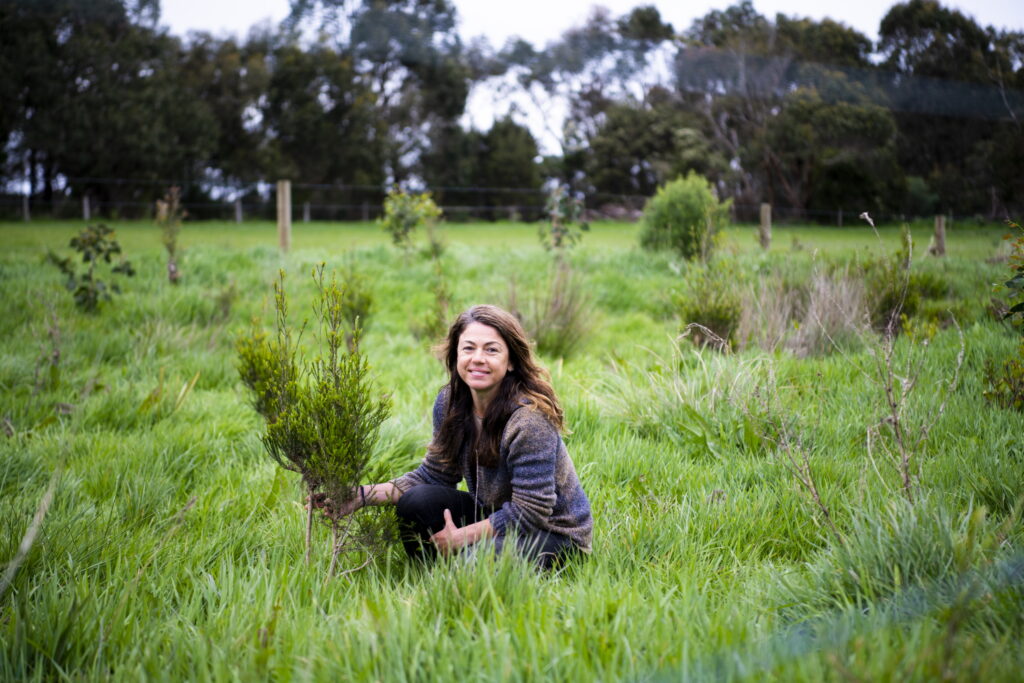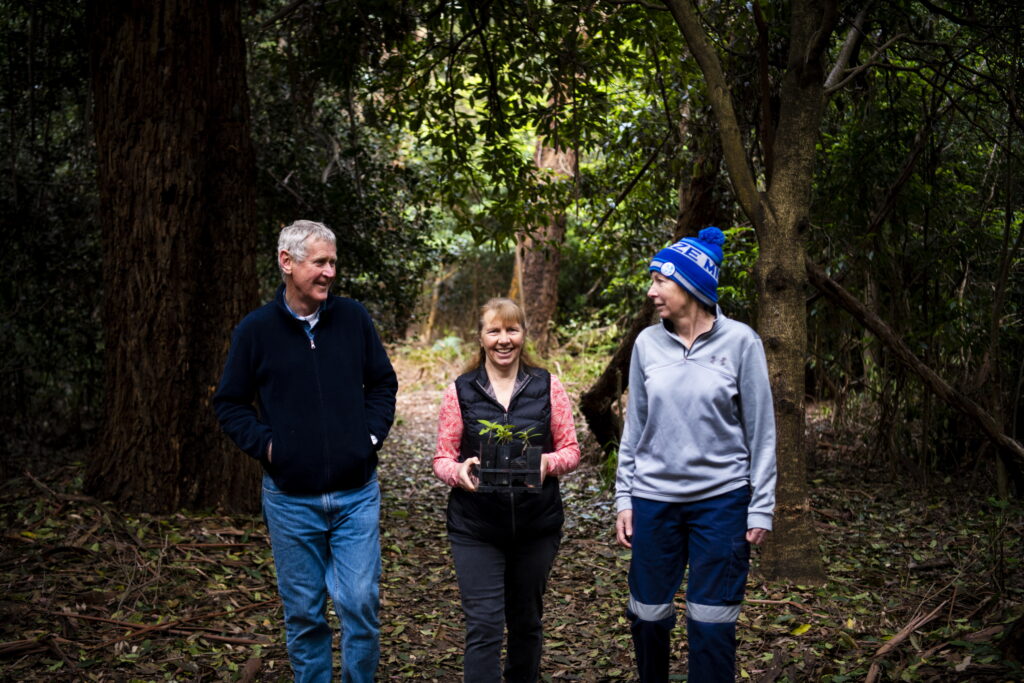Share in our story…
Dive deeper into the work of West Gippsland CMA and partners.
You’ll find a range of corporate and useful publications on this page. If you can’t find what you’re looking for, please call us on 1300 094 262. Some documents are too large to put on our site, where this is the case we have included a description of the document and you can email us if you would like a copy.
Large print and accessible copies of these documents are available on request.
Achievements Brochure 2024
Each year we produce a year of achievements brochure (PDF 3MB), this gives you a snapshot of projects we have completed in the last year, that addresses the priorities in our Regional Catchment Strategy.
Annual Reports
Each year, we are required to prepare an Annual Report to be tabled by the Minister for Environment, Climate Change and Water. You can now download a copy of our 2023-24 Annual Report (PDF 5MB)
Previous copies of our Annual Report are also available for download as shown below:
- 2022-23 Annual Report (PDF 4MB)
- 2023 Achievements Summary (PDF 32MB)
- 2021-22 Annual Report (PDF 10MB)
- 2022 Achievements Summary (PDF 4MB)
Past annual reports are available by emailing communications@wgcma.vic.gov.au
Diversity and Inclusion at CMAs
Many individuals, groups and organisations contribute to the health of our rivers, landscapes and biodiversity and production systems. These diverse partnerships are vital to effectively sustain our environment, assist agriculture, underpin our economy and deliver social and recreation benefits for local communities. For more, download Diversity and Inclusion brochure (PDF 7MB) produced by all ten Victorian CMAs.
Regional Landcare Support Plan 2020-2025
The Regional Landcare Support Plan was developed by us and the five networks to guide regional support for Landcare. It reflects the principles of the Victorian Landcare Program Strategic Plan. You can download a copy of the plan (PDF 5MB) or view it on our Landcare page.
Strategic Plan 2024-2029
Our plan guides the work we do in areas of strategic importance over the 2024-2029 planning period. It is an agreed map between the Board, management and staff, setting the priorities, focus and direction for the CMA over the next five years.
Our Strategic Plan 2024-29 (PDF 2MB)
Victorian CMAs Actions and Achievements Report 2023
The 2023 Victorian Catchment Management Authorities Actions and Achievements Report (PDF 6MB) provides a synopsis of our collective achievements across the state, which were delivered throughout the year with the vision to inspire and facilitate partnerships and actions that achieved improved catchment health.
A summary of the 2023 Victorian CMAs Actions and Achievements is available here (PDF 1MB).
Public Interest Disclosures Policy and Procedure
We are required to establish and publish procedures under section 58 of the Public Interest Disclosures Act 2012, and ensure these procedures must be readily available both to members of the public as well as internally to all staff and Board members of the Authority.
These procedures form an essential part of WGCMAs commitment to the aims and objectives of the Act. The WGCMA does not tolerate improper conduct by the organisation, its employees, officers or Board members, nor the taking of reprisals against those who come forward to disclose such conduct.
The Authority recognises the value of transparency and accountability in its administrative and management practices and supports the making of disclosures that reveal improper conduct or the taking of detrimental action in reprisal against persons who come forward to report such improper conduct.
The Authority will take all reasonable steps to protect people who make such disclosures from any detrimental action in reprisal for making the disclosures. It will also afford natural justice to the person or body who is the subject of the disclosures.
Public Interest Disclosure Procedure – (PDF 312KB)
Public Interest Disclosure Policy – (PDF 144KB)
Privacy
Our Information Privacy Policy sets out how West Gippsland CMA meets the requirements of the Privacy and Data Protection Act 2014.
The policy covers our functions and the information we collect, use, disclose, store, secure and dispose information.
Information Privacy Policy (PDF 217KB)
Freedom of Information
The Freedom of Information Act 1982 (the Act) allows the public a right of access to documents held by us. The purpose of the Act is to extend as far as possible the right of the community to access information held by government departments, local councils, Ministers, and other bodies subject to the Act.
An applicant has the right to apply for access to documents held by us. This comprises documents both created by us or supplied to us by an external organisation or individual, any may also include maps, films, microfiche, photographs, computer printouts, computer discs, tape recordings and videotapes.
The Act allows us to refuse access, either fully or partially, to certain documents or information. Examples of documents that may not be accessed include cabinet documents; some internal working documents; law enforcement documents; documents covered by legal professional privilege, such as legal advice; personal information about other people; and information provided to us in-confidence.
From 1 September 2017, the Act has been amended to reduce the Freedom of Information (FOI) processing time for requests received from 45 to 30 days, However, when external consultation is required under s29, 29A, 31, 31A, 33, 34 or 35, the processing time automatically reverts to 45 days. Processing time may also be extended by periods of 30 days, in consultation with the applicant. With the applicant’s agreement this may occur any number of times. However, obtaining an applicant’s agreement for an extension cannot occur after the expiry of the timeframe for deciding a request.
If an applicant is not satisfied by a decision we make, under section 49A of the Act, they have the right to seek a review by the Office of the Victorian Information Commissioner (OVIC) within 28 days of receiving a decision letter.
Making a request
Before you apply, you may want to:
- Read about the documents West Gippsland CMA creates and holds in our Part II Information Statements (PDF 266KB)
- Find our more about Freedom of Information at the Victorian Information Commissioner’s website.
Freedom of Information (FOI) requests can be lodged online at here. An application fee of $32.70 applies from 1 July, 2024. Access charges may also be payable if the document pool is large, and the search for material time consuming.
Access to documents can also be obtained through a written request to our FOI team, as detailed in s17 of the Freedom of Information Act 1982.
When making an FOI request, applicants should ensure requests are in writing and clearly identify what types of material/documents are being sought. We encourage anyone applying for documents under the Freedom of Information Act to use the application form. The form includes information about how to ensure your request is valid.
Download the Freedom of Information Request Form – (DOCX)
Requests for documents in possession of the West Gippsland Catchment Management Authority (WGCMA) should be directed to:
Lucy Laurie-Rhodes (FOI Officer)
West Gippsland Catchment Management Authority
PO Box 1374, Traralgon Vic 3844
T: 1300 094 262
E: lucyl@wgcma.vic.gov.au
Further information regarding the operation and scope of the FOI can be obtained from the Act, regulations made under the Act, via email enquiries@ovic.vic.gov.au or phone 1300 006 842.
Statement of Obligations
These statements are required under the Water Act and the Catchment and Land Protection Act and outline our obligations as a catchment management authority.
You can download a copy of the CaLP Act statements of obligations (PDF 546KB) or the Water Act statement of obligations (PDF 680KB).
Procurement
Guide for suppliers
Suppliers must ensure that they and their employees, workers, representatives suppliers, and subcontractors comply with the standards of conduct set out in the Victorian Government’s Supplier Code of Conduct (PDF 155KB), the WGCMA Supplier Engagement Plan (PDF 286KB) and in other contractual obligations to the CMA.
Supplier Code of Conduct
The Supplier Code of Conduct describes the minimum expectations in the areas of: integrity, ethics and conduct; conflict of interest, gifts, benefits and hospitality; corporate governance; labour and human rights; health and safety; and environmental management. Suppliers to the WGCMA are advised to review the Supplier Code of Conducts and ensure the relevant areas of their business and supply chain meet these standards.
Forward Procurement Activity Plan
WGCMA are required to publish a summary of our forecast procurement activities, in accordance with the Victorian Government Purchasing Board’s Governance Policy.
The Forward Procurement Activity Plan is provided solely for informational purposes and should not be relied upon for any reason. All planned procurement’s are subject to change at any time at the Authority’s discretion. This information does not represent a solicitation or invitation to supply, or a commitment by the Authority to purchase the described goods or services.
Procurement totals identified on this plan are expected to have a value greater than $150,000.
Forward Procurement Activity Plan – Updated January 2025 – (PDF 80KB)
Supplier Engagement Plan
WGCMA is committed to partnering strategically with our suppliers to help WGCMA provide it’s services. Our Supplier Engagement Plan (PDF 286KB) establishes a plan for enhancing WGCMA’s relationships with Suppliers to improve procurement outcomes.
Procurement Complaints
To lodge a complaint regarding an aspect of the WGCMA procurement process, write to:
Chief Financial Officer
PO Box 1374, Traralgon Vic 3844
Or via email to: lucyl@wgcma.vic.gov.au
Complaints will be managed in a consistent, fair and transparent manner in accordance with the process as outlined in our Supplier Engagement Plan (PDF 286KB).
Social Procurement and Guide for Suppliers
The West Gippsland Catchment Management Authority (WGCMA) is committed to achieving the objectives of Victoria’s Social Procurement Framework. The aim of this strategy is to ensure value-for-money considerations are not solely focused on price but encompass opportunities to deliver social and sustainable outcomes that benefit the Victorian community.
WGCMA’s vision is for a healthy catchment, valued and cared for by the community, that underpin the environmental, social, cultural and economic wealth of the region. We see that an important aspect of achieving this vision is by providing a workplace and work practices that both embrace and reflect the diversity of our community and support inclusion and participation by everyone. Social and sustainable procurement helps in fully establishing inclusive principles within the CMA and meeting our social value objectives.
By-law Number 4 Waterways Protection 2024
This by-law relates to floodplain work we do to protect lives and property. You can download a copy of the by-law (PDF 3MB) for more information.
Conflict of Interest policy (including gifts and benefits)
The Conflict of Interest policy (PDF 307KB) outlines how our staff handle conflicts of interest (real or perceived) including gifts and benefits.
We’re required to list our gift and benefit register over for the last two years, they are listed below.
Climate Change Strategy 2016
The Strategy is a sub-strategy of the West Gippsland Regional Catchment Strategy (RCS). It is based on the latest climate projections, a literature review, an impact and vulnerability assessment and regional stakeholder consultation. The Strategy aims to support the integration of climate change knowledge into the current RCS implementation program and help inform future regional planning efforts.
Corner Inlet Water Quality Improvement Plan 2013
Corner Inlet is a key landscape priority area identified in the RCS and Waterway Strategy. Chapters 1-6 (PDF 2MB) and Chapters 7-13 (PDF 2MB) outline the actions, works and funding required to improve water quality in Corner Inlet.
Gippsland Irrigation Development Guidelines 2023
We recently received endorsement by DEECA, SRW, WGCMA and EGCMA of the new Gippsland Irrigation Development Guidelines (PDF 1MB), there is also a selection of handy fact sheets (PDF 2MB) available.
Gippsland Lakes Ramsar Site Management Plan
The Gippsland Lakes Ramsar Site Management Plan (PDF 7MB) was developed by East Gippsland CMA in partnership with a range of other organisations. The Plan provides the framework to protect the environmental values of the Gippsland Lakes and Lake Tyers over the next eight years, in order to maintain the ecological character of the Ramsar site, as required under the Ramsar Convention on Wetlands.
Invasive Plants and Animals Strategy 2010-2015
The purpose of this IPA Strategy 2010-2015 (PDF 1.8MB) is to describe the vision, goals and priorities for the management of invasive plants and animals across West Gippsland from 2010 to 2015. You can also download a copy of the background documents (PDF 1.1MB) for more information.
Macalister River Environmental Water Management Plan
The Macalister River Environmental Water Management Plan (EWMP) is a long term guiding document that stipulates the ecological outcomes, objectives and water requirements for the Macalister River downstream of Lake Glenmaggie. This plan sets out a flow management template to maintain and rehabilitate the ecological health of these river reaches using a habitat provision approach.
Native Vegetation Plan 2003
Due to our history and resource management record the West Gippsland Region has undergone dramatic changes since European settlement. These changes are most evident where there has been broad-scale clearing for agriculture, settlement and industry. This clearing of land has resulted in an 86% loss of the pre-European vegetation cover on freehold land, and much of the remaining native vegetation is in a degraded condition and fragmented state. This plan (PDF 6MB) sets out directions and priorities for vegetation management within the region. It has been developed with the input and involvement of the community and will establish a framework for ensuring a sustainable future for the region’s native vegetation.
Our Catchments, Our Communities 2021-2024
Our Catchments, Our Communities is the first statewide strategy for integrated catchment management in Victoria. It has been developed by the Department of Environment, Land, Water and Planning (DELWP) and catchment management authorities (CMAs) to strengthen integrated catchment management across Victoria.
You can access a copy of Our Catchments, Our Communities here.
Powlett River Estuary Management Plan 2015
We have developed an Estuary Management Plan (EMP) (PDF 4MB) for the Powlett River to guide future strategic management directions.
This sets out an ambitious action plan which will improve and protect the aspects which the community value.
Together with the Bass Coast Shire Council, Parks Victoria and Bass Coast Landcare Network and other interested groups we will be able to use this plan to access initiative funding from a range of sources to implement the recommended actions in this plan.
Visit the Powlett River Estuary page for more information.
Providence Ponds and Perry River Catchment Strategic Directions Statement 2017
The strategic directions described in this document represent the long-term priorities for the significant natural assets as identified by the stakeholders of the Providence Ponds and Perry River catchment.
Each strategic direction has been identified through a review of the issues in the catchment and the articulation of the long-term outcomes sought for land, water and the community. The Strategic Directions Statement will identify the natural resource management issues of importance in the catchment and the agreed areas for strategic focus.
Regional Catchment Strategy 2021-2027
One of our roles is to prepare the Regional Catchment Strategy (RCS) as a guiding document for work in the region for six years. For more information or to download a copy of the strategy, visit the RCS page.
Regional NRM Plan: Regional Land Partnerships Program 2022
The Regional NRM Plan: Regional Land Partnerships Program 2022 (PDF 3MB) is an addendum to the West Gippsland Regional Catchment Strategy (RCS) 2021-2027, and compliments the RCS by:
- Describing the regional context and stakeholder aspirations as they relate to the Australian Government’s priorities and investment programs
- Identifying regional priorities aligned to the Regional Land Partnership investment priorities for Ramsar sites, threatened species, threatened ecological communities and sustainable agriculture; and
- Identifying project concepts and actions that will contribute to the 5-year Outcomes and investment priorities of the Australian Government’s Regional Land Partnerships Program.
Strzelecki Integrated Management Strategy 2009
This strategy (PDF 1.7MB) and its appendices (PDF 454KB) aims to better integrate the management of the Strzelecki Ranges and will help in formulating subsequent local area plans for effective natural resource management. Other documents relevant to the Strzelecki Ranges Bioregion are the Fish Creek Biodiversity Landscape Plan, Grand Ridge Biodiversity Landscape Plan, Narracan Biodiversity Landscape Plan and the Strzelecki West Biodiversity Landscape Plan.
Thomson River Environment Water Management Plan
The Thomson River Environmental Water Management Plan is a guiding document that sets out long-term (5-10years) environmental watering goals, objectives and water regime required to meet set objectives.
Thomson River Rainbow Creek Management Plan 2020
This plan (PDF 1MB) has been developed using an evidence-based approach, informed by science, modelling, benefit:cost analysis and the knowledge and expertise of local people.
The overall vision for this Waterway Management Plan is that the Thomson and Rainbow system is managed to reduce the risk of avulsion and improve waterway health with benefits for agriculture, the community and the Gippsland Lakes.
Waterhole Creek Waterway Management Plan 2013
This plan (PDF 8MB) has been developed in conjunction with Latrobe City Council to guide future strategic management directions.
Wellington Land and Water Management Plan 2018
This plan outlines how irrigators, industry and government will work together to achieve a highly productive and sustainable irrigation community that values and protects its natural and cultural assets. The ten-year plan, developed with input from irrigators, industry and government, benefits irrigated land and the environment in the Lake Wellington catchment. It replaced the 2008 Macalister LWMP.
West Gippsland Regional NRM Climate Change Strategy 2016
Natural resource managers have faced challenging climate related events in recent times, including flood, wildfire and drought. These major events have caused substantial damage to the natural environment in some areas of the region and have had an impact on the region’s economy and communities. To help understand and better prepare for the impacts of climate change on the natural environment, we have developed a Regional Natural Resource Management (NRM) Climate Change Strategy.
West Gippsland Salinity Management Plan and Urban Salinity Assessment
These plans aim to assess and address salinity in West Gippsland. They detail a package of management actions to reduce and prevent the effect of salinity on the region’s assets. The plan also details a time frame for adoption, cost sharing arrangements and roles and responsibilities for implementation. Email us for a copy of either the plan or the Urban Salinity Assessment.
West Gippsland Soil Erosion Management Plan 2008
This plan (PDF 5MB) aims to address erosion in the West Gippsland region from 2010-2015. It uses an assets-based approach to prioritise management actions and target areas for activities that can be undertaken to reduce, prevent and remediate the effects of erosion.
West Gippsland Waterway Strategy 2014-2022
This is the guiding document for waterway management over the next eight years. Visit the Waterway Strategy page for more information.
Indigenous Partnership and Participation Project
‘In Partnership’ is a summary of the achievements of our Indigenous Partnership and Participation project. This project has generated significant benefits for all the organisations involved and underpins the enduring partnerships between Traditional Owners and WGCMA.
National Landcare Program Five Year Overview 2013–2018
Over the past five years, the Australian Government has invested more than $1 billion in the National Landcare Program. Accessing funding through this program has enabled the WGCMA to protect vulnerable eco-systems, empower farmers, encourage biodiversity and sustainable agriculture and highlight the importance of natural resource management.
This brochure provides a snapshot of the highlights and achievements of the projects funded under the National Landcare Program.
Native Pasture Management
There are about 1,000 native grass species in Australia. They are well adapted to the harsh and varying climate, low fertility soils and play an important part in maintaining ecosystem health. Find out more about native pasture management.
Red Gum Grassy Woodlands ID Tool
Use this document to help identify native grasses in Gippsland’s Red Gum Grassy Woodlands.
Wirn wirndook Yeerung – The Macalister River
The Macliaster River, rising in the Great Dividing Range and flowing south towards Licola and then on to Maffra and the Gippsland Lakes, supports a healthy environment, a thriving irrigation region and a strong community.
Pre European settlement, Wirn wirndook Yeerung was an important resource and pathway for the Gunaikurnai people as they travelled from the Alpine areas to the heart of what we now call Gippsland. In 2020, people with a connection to the river were interviewed and their stories have been recorded in a limited edition book: Stories of Wirn wirndook Yeerung – The Macalister River.
Like a hard copy of the book? Email us eflows@wgcma.vic.gov.au






